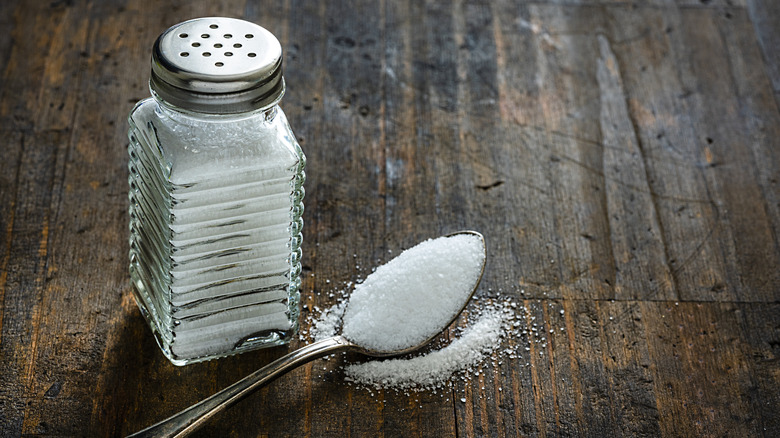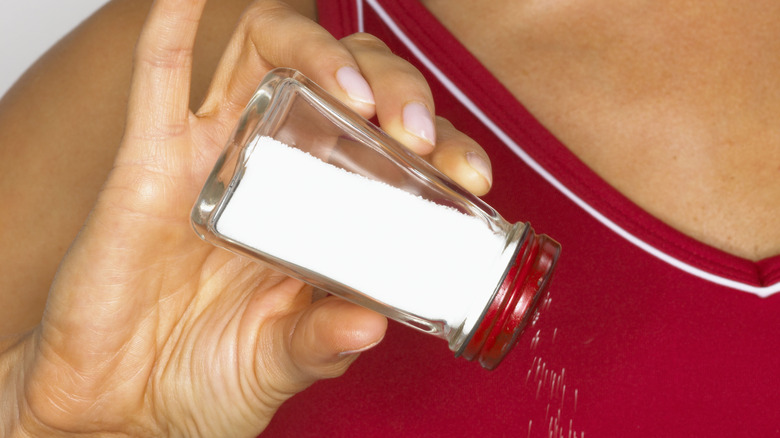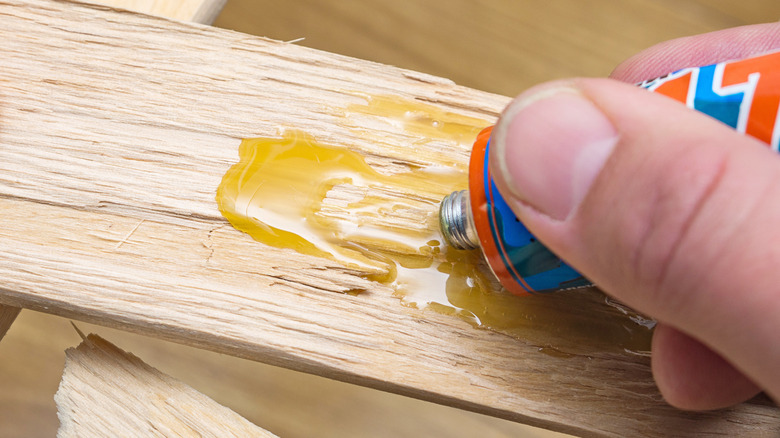Is Salt The Secret To Getting Dried Super Glue Off Of Your Hands?
Super glue is the star component of many simple home repairs and DIY projects. The impressively strong household staple is often there to get you out of a bind, but how do you escape when it traps you in a sticky situation? Super glue users across the globe have likely experienced the misfortune of getting the quick-drying substance on their hands. It can seem nearly impossible to remove from the skin. This has led many to search for super glue removal hacks when all else fails.
Unfortunately, many of the super glue removal techniques recommended across the internet pose risks and are not recommended by professionals. Salt is a recurring ingredient in many of these methods. Some of these tutorials include guidance on how to care for your skin after using salt to avoid skin irritation, which hints at how abrasive this technique can be. You may not find the risk of irritation to be surprising as salt is known to be drying and harsh on the skin. Let's dive deeper into exactly why this is not the safest method for removing dried superglue from your hands and explore better options.
The problem with using salt to remove super glue
Popular super-glue removal techniques involve combining water and salt until a paste is formed, and then lightly scrubbing that paste onto the affected area using a circular motion until the glue is loosened. A tutorial from Gluesavior advises readers to wash the glue and salt residue off their hands and follow up with moisturizer, but this may not be enough to escape the risks and possible side effects of using salt on the skin.
Board-certified dermatologist Azadeh Shirazi spoke with Healthline about the potential harm associated with using salt water on the skin. "This can worsen some skin conditions like acne and eczema, or potentially cause hyperpigmentation and scarring as a result," Shirazi told the outlet. "It may also delay proper treatment and care from a dermatologist." Super-glue users who take part in this method may encounter similar side effects. The skin irritation one may experience when using salt to remove super glue can cause quite a few other uncomfortable symptoms, such as flaking, itching, and peeling.
There are safer superglue removal methods
Salt paste aside, there are quite a few other super glue removal methods that may be just as effective and not as irritating. Super glue brand Loctite published a guide on how to remove the sticky substance from your hands — and none of their methods require the use of salt. The brand's first recommendation is to simply soak your hands in warm, soapy water and peel the glue residue away. If that does not work you can also soak your hands in 1 part water, 1 part lemon juice.
Olive oil or margarine are substances that may remove the glue from your skin as well. If those methods do not work for you, Loctite also suggests adding ¼ cup of detergent to 1 cup of warm water and rubbing your skin for about 20 seconds. Finally, super glue remover can be used to get the product off of your skin.
You can even use acetone to break down the glue but be aware that it can also be irritating. The acetone method is not recommended for use on cut or otherwise damaged areas of skin, or for sensitive areas of skin, such as around the eyes, nose, or mouth. Other options include rubbing petroleum jelly on the skin or scraping glue off with a pumice stone. With so many other ways to remove super glue from your hands, do you really need to risk skin irritation by using salt?


